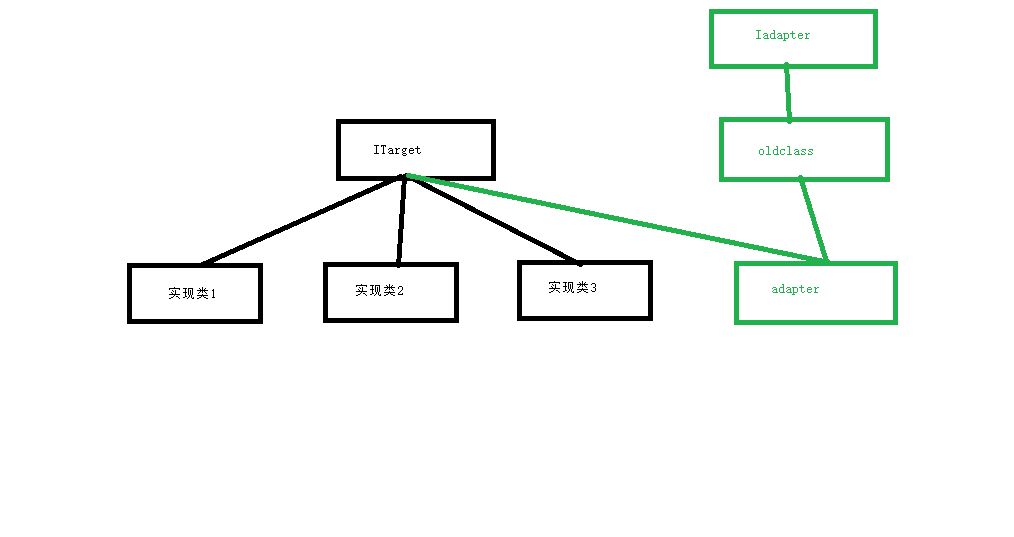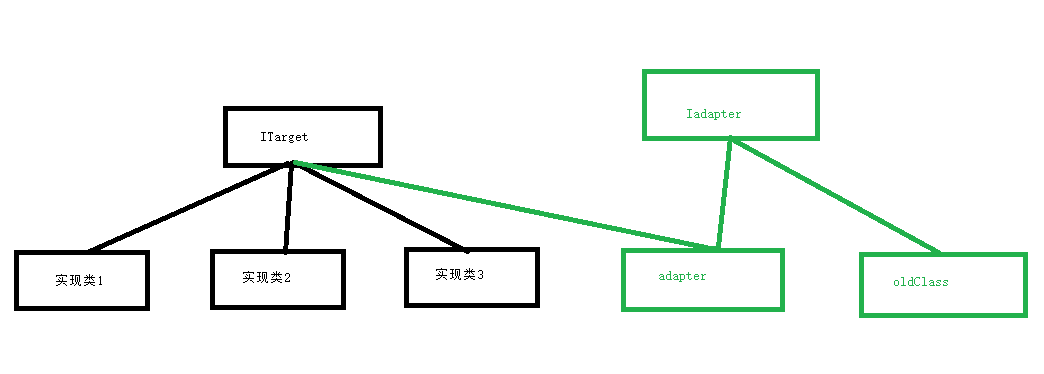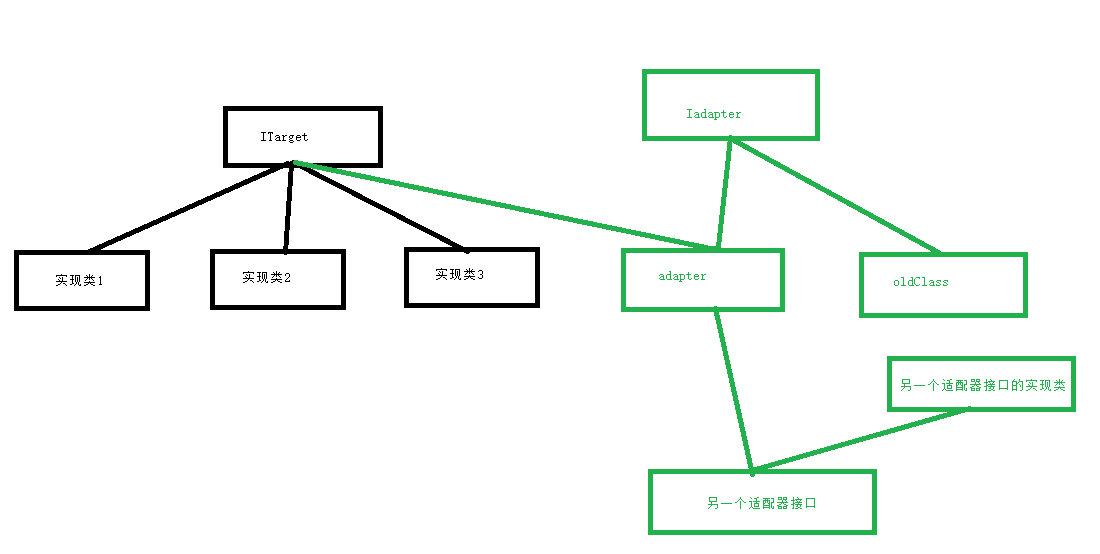不一样的适配器模式(设计模式三)
前言
适配器模式,是一个看起来简单的模式,同时也是最复杂的模式。
查看适配器的作用,直接查看它的演化,也许更为容易理解。
开车出发
适配器大概分为两类,一类为类适配器,另一类为对象适配器。
//新接口
public interface ITarget {
void Process();
}
//旧接口
public interface Iadapter
{
void doSomeThing();
void doOtherThing();
}
//旧接口的实现类
public class oldClass : Iadapter
{
public void doOtherThing()
{
throw new NotImplementedException();
}
public void doSomeThing()
{
throw new NotImplementedException();
}
}
//新的接口实现
public class Adapter : oldClass, ITarget
{
public void Process()
{
doSomeThing();
doOtherThing();
}
}
解释:
类 | 作用
-|-|-
ITarget |一个新的需求接口
Iadapter | 旧的接口
oldClass | 旧的接口实现类
Adapter | 新的的接口实现类
从上面可以看出,新的接口的需求里,需要调用旧的接口里面的实现方法。这是它的一个应用场景。
很容易想到一个问题,为什么不直接扩展旧的接口呢?其实更加真实的场景,请看下面这张图。

在这里,通过这种方式,我们可以说是适配了一个多态场景。
这种方式视为类适配器,存在的很大的局限性,请看下图红色部分。

在红色的部分中,圈出了oldclass,这意味着我们仅仅对oldclass进行了适配。如果Iadapter还有其他衍生的类,那么这将是一个庞大的结构问题,不建议使用。
对象适配器:
//新接口
public interface ITarget {
void Process();
}
//旧接口
public interface Iadapter
{
void doSomeThing();
void doOtherThing();
}
//旧接口的实现类
public class oldClass : Iadapter
{
public void doOtherThing()
{
throw new NotImplementedException();
}
public void doSomeThing()
{
throw new NotImplementedException();
}
}
//新的接口实现
public class Adapter : ITarget
{
public Iadapter Iadapter;
public Adapter(Iadapter Iadapter) {
this.Iadapter = Iadapter;
}
public void Process()
{
Iadapter.doSomeThing();
Iadapter.doOtherThing();
}
}
请看下图:

这样我们就适配了Iadapter 这个接口下的所有实现类,比类适配器的另一个好处是,在不能多继承的高级语言(钻石继承)中,可以如下实现,也更符合实际的复杂一点点的情形。

对于复杂一点的对象适配器依然实用,但是类适配器却很难做到。
调用:
static void Main(string[] args)
{
Iadapter adapter = new oldClass();
ITarget target = new Adapter(adapter);
target.Process();
}
uml 图
画图,后续补上。
总结
适配器模式的场景是为了适配新的需求,新的需求可以复用旧的接口或者类。
作用:保留现有类所提供的服务,向新需求提供接口,以满足新需求的期望


